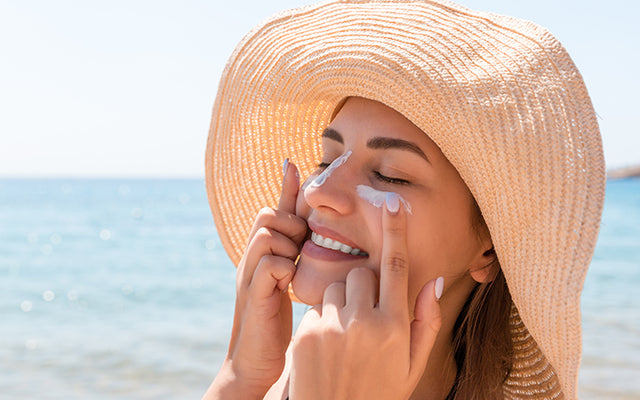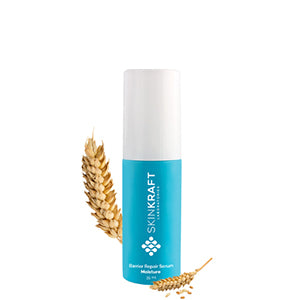What is that one skincare step you should never forget before stepping out during the day? The sunscreen, of course!
Sunscreen works as a shield for your skin and protects it from harmful UV rays, which cause tanning, redness and irritation. However, there are way too many types of sunscreens flooding the market, right? Not all of them may necessarily suit your skin.
Today, we are going to shed light on how to choose the best sunscreen for your skin type. Keep reading.
Highlights:
Your Basic Guide To Sunscreen
Sunscreens come in two forms - physical and chemical. The ingredients used in the sunscreen [1] helps you determine the category. Here, we have simplified the process for you.
|
Physical Sunscreen |
Chemical Sunscreen [2] |
|
It has ingredients like titanium dioxide and zinc oxide. |
Avobenzone and oxybenzone are the key ingredients. |
|
Works well on acne, sensitive and irritated skin as they don’t contain harmful chemicals. |
It may not be ideal for all skin types. |
|
The protective shield of sunscreen bounces the sunlight away. |
It absorbs UV radiations and stops them from entering your skin. |
|
In case of improper blending, it may leave a white cast on your face. |
Chemical sunscreens do not leave a white cast on application. |
|
It starts working immediately after application, meaning you don’t need to wait for 20 minutes before stepping out. |
It takes 20–30 minutes to start working. Thus, you need to apply it 20 minutes before you step out under the sun. |
You will also find some sunscreens today that are a blend of physical and chemical sunscreens. They are specially modified to make them safe for sensitive skin as well as to avoid the white cast on application. SkinKraft customizes physical-cum-chemical sunscreens for oily skin as well as dry skin.
Things To Consider Before Choosing A Sunscreen
Now that you have understood how to identify a physical and chemical sunscreen, there are a few other things you need to consider before buying your sunscreen. Your sunscreen needs to:
- Be SPF 30 or above
- Protect you from both UVA and UVB rays (broad spectrum)
- Be water-resistant
- Suit your skin

How To Choose A Sunscreen Based On Your Skin Type?
Just like your fingerprints, your skin type is also unique. If you want to know what your skin type is and how to take care of it, take this free Skin ID test from SkinKraft. You can also buy customized skincare products formulated to suit your unique skin by taking the skin quiz.
Being aware of your skin type is paramount and gives you clarity of how it should be taken care of. Here are the common skin types and the ideal sunscreens for them:
1. Dry Skin
Dry skin needs complete hydration. Thus, choosing a sunscreen with moisturizing elements is the best option for dry skin. Go for a cream or lotion-based sunscreen with SPF between 30 to 50. It will not only protect your skin from sun damage but also make it softer and smoother. Mineral and physical sunscreens usually work well on dry skin.
2. Oily Skin
Oily skin always feels greasy and looks shiny even after a face wash. It means your sebaceous glands are over-producing sebum. Since your skin is already oily, a non-greasy, light-weight and matt-finish chemical sunscreen is the best choice for your skin. If you use a heavy or greasy sunscreen, your skin pores may get clogged due to excess oil.
3. Sensitive Skin
People with sensitive skin should use physical sunscreens that contain ingredients like titanium dioxide and zinc oxide. These ingredients are milder and would not have any major side effects on your skin. Also, do not use products that have parabens or oxybenzone, in order to avoid skin rashes and irritation.
4. Acne-Prone Skin
Acne-prone skin can be troublesome. People who have acne-prone skin should choose their sunscreen very wisely. There are physical sunscreens usually labelled as non-comedogenic [3], which means it is specially formulated to avoid clogged pores. Do not use any harsh ingredients on your face and strictly avoid chemical sunscreens.
5. Normal Skin
Those of you blessed with normal skin and who don’t have any skin concerns can opt for any sunscreen that looks good on their skin. However, it is always advisable to opt for physical sunscreens over chemical ones, to prevent skin irritation in the future.

How To Use Sunscreen?
- Apply your moisturizer immediately after a shower or face wash. Give it 10-15 minutes to get absorbed into your skin.
- Then apply sunscreen at least 20 to 30 minutes before going out under the sun if you’re using a chemical sunscreen. In case of a physical sunscreen, you can step out immediately.
- Take a sufficient amount of sunscreen in your palm and apply it gently on all exposed areas using your fingertips.
- Do not use too much at once. However, very little amount may also not give you enough sun protection.
- Avoid any contact with eyes while applying.
- Apply it every 2-3 hours if you are going swimming or for any other outdoor activity.
Word of Caution
If you are trying a new sunscreen, do a patch test on a small part of your skin 24 hours before the actual application. You would get to know if the product is causing any allergy or rash on your skin.
Wrapping Up
Sunscreen is an unavoidable step in your skincare routine. You must choose a product that suits your skin perfectly and offers adequate sun protection. Choose a combination of physical and chemical sunscreens for maximum benefits and a broad-spectrum variety for ideal protection.
Recommended Products
Was this Article helpful?
- Least helpful
- Most helpful



